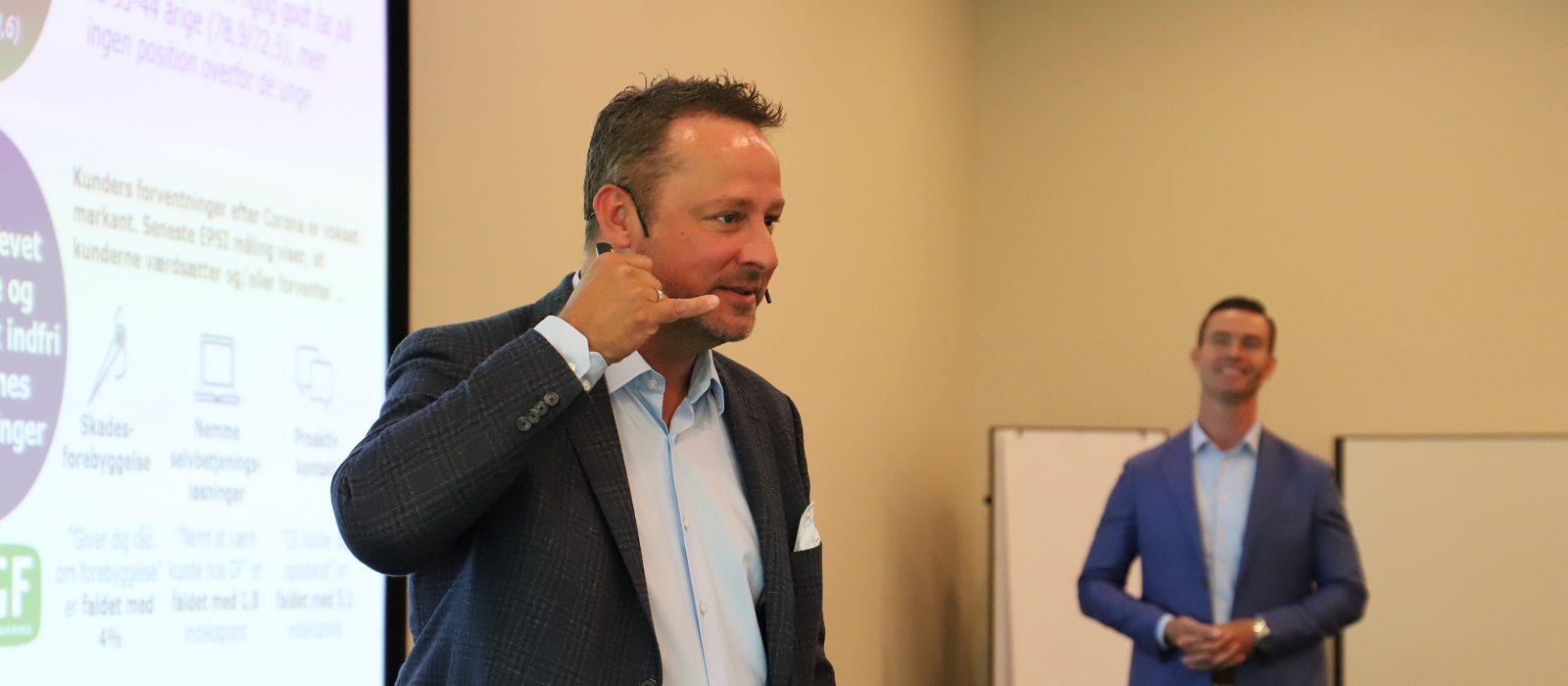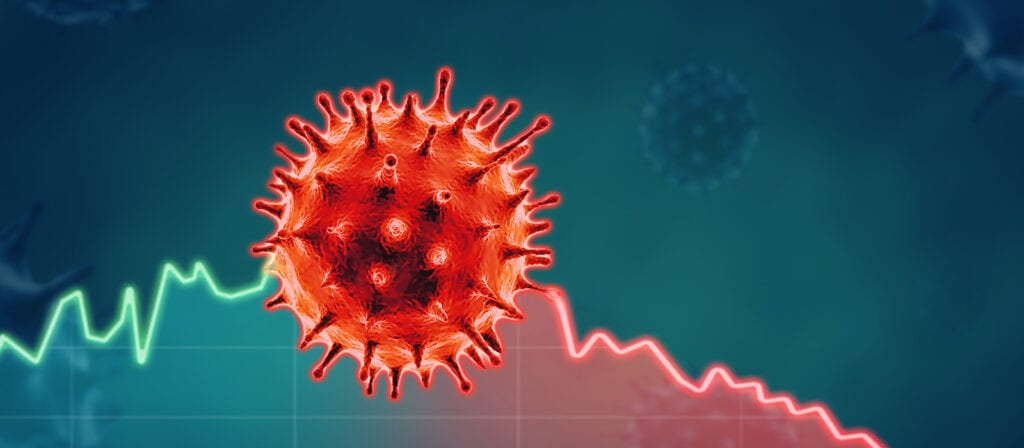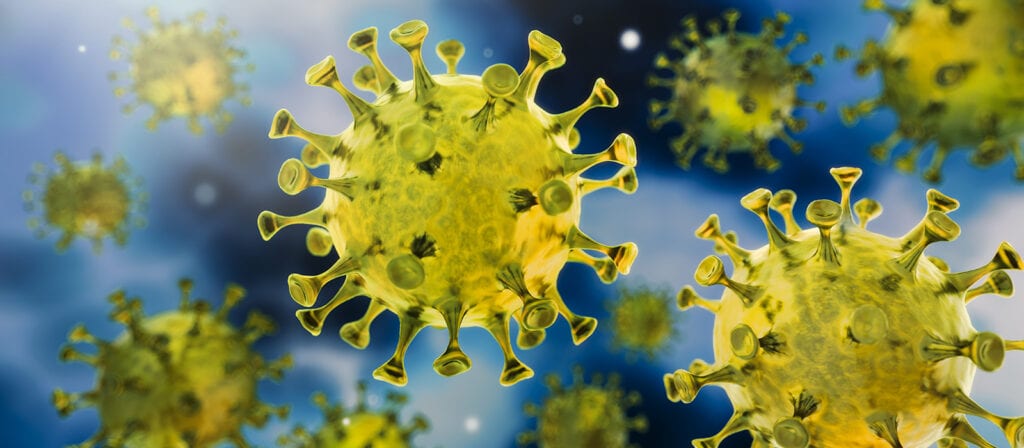In a recent article ICMIF Supporting Member Swiss Re shared three conversations with three of Swiss Re Institute’s thought leaders. We are pleased to share this article as our latest guest blog. The article is reproduced for the benefit of ICMIF members with the kind permission of Swiss Re. A Japanese version of the article is available on the ICMIF Asia and Oceania Association’s website here.
Swiss Re brings together experts from various fields to share their insights on the COVID-19 crisis. While we don’t have all the answers – no one does in these uncertain and fast evolving times – we believe it’s key to ramp up dialogue, discuss scenarios and connect wherever and whenever we can. The first conversation features three of Swiss Re Institute’s thought leaders: Group Chief Economist Jerome Haegeli, Head Life & Behaviour R&D Christoph Nabholz as well as Emerging Risks Research Lead and Epidemiologist Stephen Kramer.
A conversation with Jerome Haegeli, Group Chief Economist, Swiss Re Institute
What is the impact on the global economy?
Haegeli: It’s clear that we are already in a global recession. The key questions now are: How deep will it be? How long will it be? And what will the recovery look like? At this point we know that the global recession will be massive, and it will be deep, in the order of at least 1% for 2020. For the Eurozone we expect the recession to be of a –4.0 to –4.5% magnitude. We’re talking big numbers, also in terms of the recessionary impact for the US.
How does this compare to the 2008 global financial crisis?
Haegeli: It is comparable in terms of global growth impact over the year. However, this recession operates at an elevated speed, being twice as fast as the economic downturn brought on by the 2008 financial crisis. Furthermore, the growth shock impact for the quarter is at least twice as strong compared to the Great Financial Crisis. The time axis adds an additional element of uncertainty. Where previous crises have come as a sudden shock, the COVID-19 pandemic is a slowly growing and evolving shock to the global system, making it all the harder to evaluate scenarios. We’re months away from even starting on the road to recovery and, at this time, we expect the macro and market impact to last about two quarters, possibly three.
Is the global economy resilient enough?
Haegeli: Well, the positive news is that economic activity will increase again after a protracted period of time – we will see the recovery of the global economy in 2021. Our research clearly shows that we are considerably less resilient compared to pre-2008. Even before the COVID-19 shock to the system, the global economy has been in a weakened state – it is also because of this that we must expect the road out of this deep recession to be a longer one.
What are your concerns for the coming years?
Haegeli: One big concern I have is with central banks. As financial markets are rattled and struggling, central banks will, yet again, have to step in – and they’ll have to do so massively. I expect that to remain the norm for quite a long time. I’m concerned about the future of the financial market infrastructure and the role of governments. Will they be able to reduce and close those fiscal gates again? Another concern is inflation. We’re not saying that it will come back, but it is on our radar. “Stagflation” is a definitely a key scenario that we, as insurance market players, keep a close eye on.
Any particular suggestions on how to get through this recession?
Haegeli: These extremely volatile times require both calm and an open mind. My suggestion would be to continue to think long-term and to remain long-term investors. It’s also imperative to keep evaluating potential scenarios – for some companies, the next 1-2 years may change their value proposition and require a different strategy. Finally, I’d urge everyone to remain realistic and not to hope for things to go back to normal in terms of interest rates.
“It’s clear that we are already in a global recession.”
Jerome Haegeli, Group Chief Economist, Swiss Re Institute
A conversation with Christoph Nabholz, Head Life and Behaviour R&D, Swiss Re Institute
What can we see when comparing COVID-19 to previous zoonotic diseases?
Nabholz: We have some experience from dealing with SARS in 2002 and MERS in 2012, two similar coronaviruses. When it comes to COVID-19, we already have a first learning in terms of population structures and at-risk populations. When we look at reported cases, we see that COVID-19 particularly affects an older age group. In Switzerland for example, the median age of confirmed COVID-19 patients to date is 52 years, those hospitalised 70 years and a median of 83 years for those who died, with an average age of 53 in China and an average age of 63 in Italy. Of course, we also see dramatic differences in terms of containment. While SARS and MERS were contained quite effectively, COVID-19 continues to spread across the globe.
Do we know why COVID-19 could not be equally contained?
Nabholz: There’s a rationale that suggests a higher mortality rate means less spread. A lower mortality, on the other hand, helps the spread of the virus. This is what we see here. SARS had a high case fatality rate of 10%, with MERS it is 37%. These dramatic case fatality rates led to early containment at an early phase, offering the virus barely a chance to spread more widely. With COVID-19, the current global case fatality rate (within confirmed cases only) is around 4.5% and 2.4% in China. This has allowed it to develop and spread below the crisis radar, so to speak.
“We can and should learn from China. They acted swiftly, taking action when they had just four hundred cases.”
Christoph Nabholz, Head Life & Behaviour R&D, Swiss Re Institute
Are the lock-down measures we now see effective?
Nabholz: Here, we can and should learn from China. They acted swiftly, taking action when they had just four hundred cases. They closed down the whole city of Wuhan, and a day later the entire Hubei province. We’ve been analysing the timeline and development of the disease. We now know that if you do go into lock-down mode – closing all shops and mandating social distancing measures – it took China 10-12 days until they saw the curve come down. During the weeks to follow the infection rates of new cases will slow down to ultimately stop. That means, if measures are kept in place, the pandemic can be managed as China has shown.
What’s happening with regard to treatment of the infection?
Nabholz: There are no specific treatments at this point. A few experimental drugs are out there, malaria drugs are being used as they have showed some effectiveness, but nothing’s out on the market. However, there are currently four hundred trials going on – so there’s a lot of activity on that side. There are also some antivirals that have been used in Ebola and HIV patients before – some of those are already in clinical trials. But again, nothing specific at this point. For now, we’re left with organ support functions to help people survive.
How are hospitals and clinics around the world coping?
Nabholz: There are dramatic differences. In Wuhan on February 6th they had 10’000 cases – yet their city with its 28 hospitals had only 8’000 patient beds ready. They rapidly built and converted structures for additional hospital beds. The number of available hospital beds is a good indication of how well a city or region will be able to manage the crisis. Another way to impress on the severity of the situation: In Wuhan, they acted when they had just 400 cases – most other countries waited with any lock-down measures until they had more cases. It’s good to see that countries around the world are now catching up to provide the necessary capacity – but preparedness is still lagging.
A recent study by the Imperial College showed that millions of lives could be saved if countries act early. It seems to have had an impact, correct?
Nabholz: Indeed. They did a UK healthcare system stress-scenario that brought an urgently required clarity to the size of the challenge at hand. In their study they also illustrated a worst-case scenario both for the UK and the US – these numbers were a powerful call to action. They showed that, if no interventions take place, the COVID-19 crisis could cause 510’000 deaths in the UK, and 2.2 million deaths in the US. Luckily, the call to action was heeded and – based on everything we know today – every one of the planned interventions should have a sizeable impact on the curve and try to ensure, at the same time, that healthcare systems don’t collapse.
Can you tell us how this crisis affects consumer behaviour?
Nabholz: Our Behavioural Research Unit currently sees a population-wide fear factor. There is, on one hand, far greater risk awareness, with a massively increased salience of the mortality risk. People are looking for insurance protection – and that includes younger people, who were the ones most disengaged. On the other hand, a recent survey in the UK showed that a staggering 45% of people think that insurance will not pay out their life insurance claim if they die because of COVID-19. That’s 45%! This is a moment in time when the insurance industry worldwide needs to step up and tell the right stories. Consumers can and should trust us – but this reputation of trust is something we need to grow. From a behavioural and consumer perspective, this is absolutely key.
A conversation with Stephen Kramer, Emerging Risks Research Lead and Epidemiologist, Swiss Re Institute
Can you give us an overview over the past months in the COVID-19 crisis?
Kramer: You could think of the crisis in terms of three waves: the first one being China, the second Europe and the third the US. China’s numbers have already gone down significantly, and it is very probable that they’ll be able to keep it that way. The second wave is Europe, where we see an explosion of cases in Italy and dramatic increases elsewhere. There are likely reasons for why the virus is spreading at a different pace across Europe. Some countries have acted faster, some have more risk-averse populations, and some have better surveillance systems in place. The third wave is the United States, where the crisis is developing at 2-3 times the rate of what has been seen in Italy or Spain. This development is likely a temporary effect connected to initial testing failures. The US lost a considerable amount of time because they chose not to use the WHO tests. At this point it’s impossible to grasp what the situation in the United States really is – but numbers will continue to go up rapidly for a while before the impact of containment measures is seen.
“We need tests, we need them everywhere and we need them as soon as possible.”
Stephen Kramer, Emerging Risks Research Lead, Swiss Re Institute
How can the West leverage the East’s experience?
Kramer: China, South Korea and Singapore had practice runs in 2003 with SARS. It led them to set up infrastructure to deal with outbreaks of infectious diseases and that explains why they have been able to move so swiftly and efficiently in producing millions of tests. Their testing protocols and procedures were very different to what we see in Western Europe. Anyone who got symptoms could get tested. That whole system is geared towards catching every single case and preventing every single infection. We need to learn from their experience. What we really need is a truly global response where expertise, resources and capabilities are shared.
Are China’s measures a recipe for success?
Kramer: Some of China’s measures were severe and had a massive but short-lived negative economic and social impact. However, I do expect that China and South Korea will be able to keep their numbers down. This is largely due to additional measures they have in place that European and other countries are not using, such as a focus on quick self-identification of cases, contact tracing, and isolation of cases separately from their household to limit onward infection. While there will be some new outbreaks with this unpredictable infectious disease, the first wave countries will be able to clamp down on those very quickly, using the additional targeted measures they have in place which European countries haven’t yet implemented. From that point of view, yes, they are successful. Europe is currently focused on social distancing and, where numbers are large, on lockdowns. These are economically and socially disruptive. This approach comes with its own challenges, which is what to do when the numbers come back down.
What needs to happen now?
Kramer: We need tests, we need them everywhere and we need them as soon as possible. Comprehensive testing will allow for rapid case identification, targeted isolation of suspected and confirmed cases and, importantly, contact tracing. Contact tracing is essential, but it only makes sense if we can test the contacts. Another big challenge with the lack of a coordinated global response is that every country is doing their own thing.
Do you see positive developments?
Kramer: There is the expectation that the more severe measures will bring down the numbers in Europe in the coming months and that, by then, governments will have built up the necessary testing capabilities. That will be a very positive development. Beyond that, my hope is that we will develop our capabilities to Singapore-style levels, where anyone can get a test within three hours. There, all testing automatically triggers follow-up actions with positive tests leading to the tracing of contacts and further testing, separation and isolation. That’s what we need to get to in the coming months.
How to you perceive acceptance of crisis measures on a societal level?
Kramer: Some countries display a commendable level of adherence, others are clearly struggling, with many governments having to clamp down on laggards with warnings and fines. But again, the situation isn’t fundamentally served by local responses – we need a “whole society approach,” where citizens around the world know their responsibilities, understand the symptoms, know what to do and act accordingly. Here, I also see corporates coming in and helping with their capabilities and resources. We can help governments with their challenges – this is the time for all of us to contribute. And we can also help by finding the right global response to one of the increasingly urgent questions: What will governments do when the numbers are down?
The original Swiss Re article is available here. For more information, please visit Swiss Re or contact:
Hiroto Wakatsuki, Director and Key Account Manager, Swiss Re
Shinya Muto, Assistant Vice President, Swiss Re






